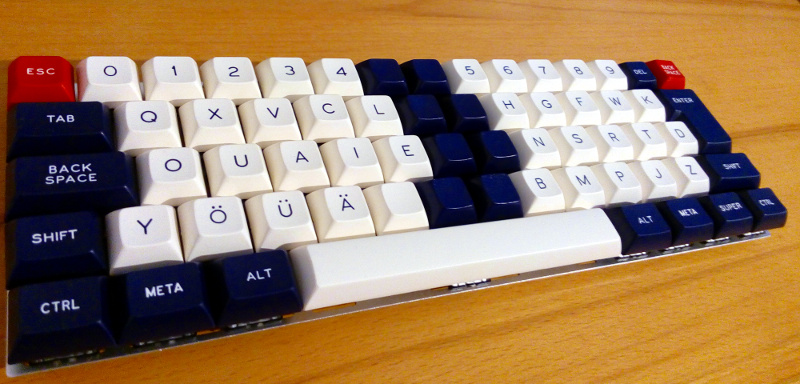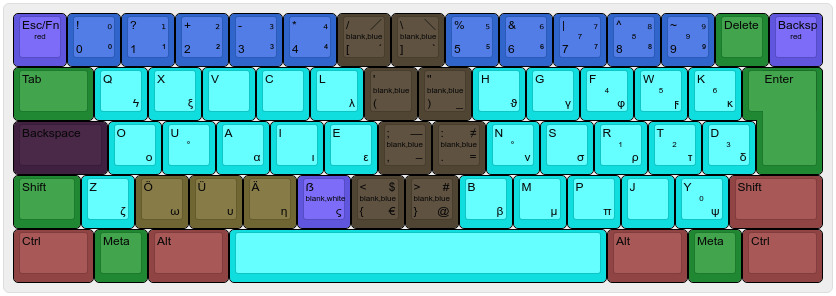Hardware: Keyboard Design
Published on 2018-04-18.
Most common keyboard layouts are biased to the left, and require a far larger reach to access keys on the right side of the keyboard.
The main goal of this project is to explore keyboard layouts in which each hand is responsible for half the keyboard’s keys.
Fundamental Ideas
The key layout is based on Neo2, which is optimized for writing both German and English texts, and tries to minimize the times the fingers or hands need to leave the home row.

The Neo2 layout was heavily modified and demonstrates some key ideas:
- placing all keys with punctuation or parentheses in the middle column of the keyboard,
- moving the position of the left and right hand one key to the right,
- shortening the right shift, making place for one additional key.
With these changes, each hand is responsible for exactly
- 15 keys with letters,
- 5 keys with digits,
- 4 keys with punctuation and
- 4 keys with modifiers.
Smaller Improvements
- The backspace key is split into a two smaller keys, a delete key and a backspace key.
- The number row starts counting from 0
- The
X,V,Ckeys remain next to each other to retain comfortable access to cut/paste/copy operations. - The
ZandYkeys are placed next to the left/right shift keys to provide convenient access to undo/redo operations. - The
CapsLockkey acts as backspace, caps lock is toggled by pressing both shift keys simultaneously instead. - The German umlaut letters
Ä,ÖandÜare placed on the same column as their non-umlaut companions. - The German letter sharp S (ß) uses the same key for both lowercase and uppercase versions of the letter.
- Holding the escape key turns it into an Fn key. This allows access to F keys from the number row;
Fn+Backspacepowers off the machine.
